Grocery shopping doesn’t need to be a constant tug-of-war between your wallet and your well-being. Simple, inexpensive changes in your shopping cart can lead to significant savings down the line. By strategically choosing certain items, you can cut costs without sacrificing quality or nutrition. Let’s explore some of these underrated, budget-friendly grocery items that punch above their weight in terms of value and savings. You might be surprised at how these small items can make a big impact on your financial health.
1. Dried Beans

Dried beans are a fantastic, cost-effective staple that can be used in a multitude of dishes. They’re packed with protein, fiber, and essential nutrients, making them a nutritious alternative to more expensive proteins like meat or fish. In comparison to canned beans, dried beans are far cheaper and have the added bonus of no preservatives or added sodium. According to Dr. Jane Smith, a nutritionist at the Healthy Living Institute, incorporating beans into your diet can reduce your grocery bill by replacing pricier protein sources. Preparing dried beans may take a bit more time, but the savings and health benefits are well worth it.
Cooking dried beans in bulk is not only economical; it’s also incredibly convenient. You can cook a large batch and store them in portioned containers in the freezer. This way, you’ll always have a quick, ready-to-use protein source for soups, salads, or main dishes. Plus, beans have a long shelf life, so they’re always ready when you are. The versatility and affordability of dried beans make them a smart grocery choice that pays off in the long run.
2. Oats

Oats are not just for breakfast; they’re a versatile ingredient that can be used in a variety of recipes. From overnight oats to homemade granola, baking, and even smoothies, oats are an economical powerhouse. They’re a good source of fiber, which aids digestion and helps you feel fuller longer, reducing the temptation to snack on more expensive or less healthy foods. Buying oats in bulk can lead to significant savings over time, especially compared to pre-packaged cereals. In addition, oats have a long shelf life, making them a staple that you can always rely on.
Another great feature of oats is their ability to serve as a substitute for costlier ingredients. Ground oats can be used in place of flour in many recipes, reducing your reliance on pricier baking supplies. They can also serve as a binder for burgers or meatballs, stretching your proteins further. This simple switch not only saves money but also boosts the nutritional content of your meals. Oats are a pantry hero that deserves a spot in everyone’s kitchen.
3. Canned Tomatoes
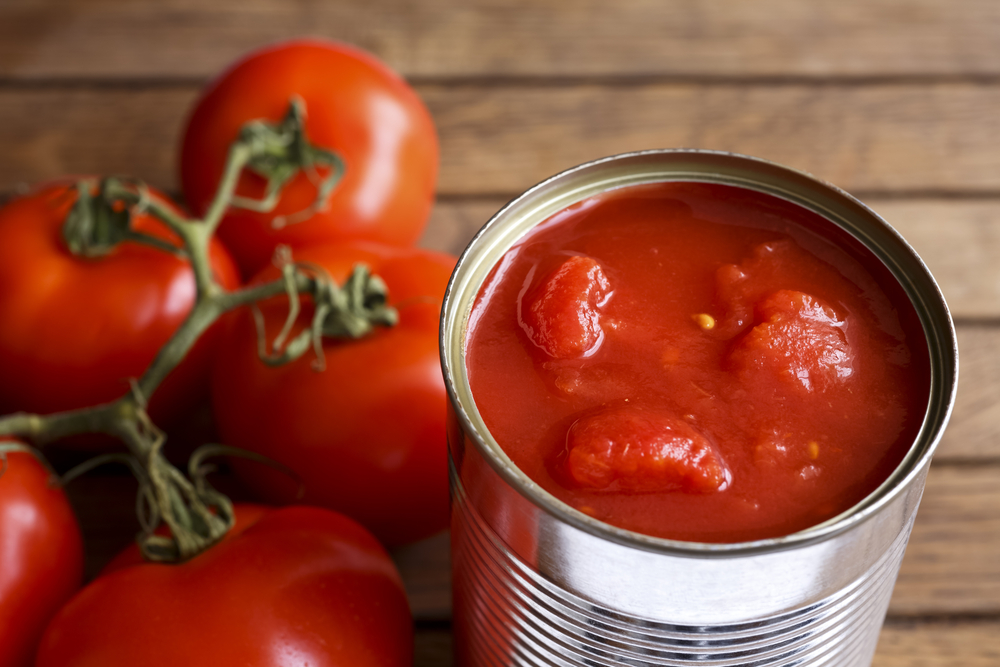
Canned tomatoes are a kitchen staple that can elevate your meals without breaking the bank. They provide a rich, flavorful base for countless dishes, from pasta sauces to stews and soups. Canned tomatoes are often picked and processed at peak ripeness, ensuring robust flavor and nutritional quality. Dr. Emily Johnson, a food scientist at the Culinary Institute of America, emphasizes the cost-efficiency of canned tomatoes compared to fresh, especially when tomatoes are out of season. They’re a versatile addition to your pantry that can easily transform simple ingredients into gourmet meals.
In addition to their flavor and cost benefits, canned tomatoes boast impressive nutritional credentials. They are high in lycopene, an antioxidant linked to decreased risk of heart disease and certain cancers. When you stock up on canned tomatoes, you’re investing in both your health and your savings. Plus, their long shelf life means they’re always ready to add a burst of flavor to your dishes. It’s an investment that can save you time and money while enhancing your meals.
4. Rice
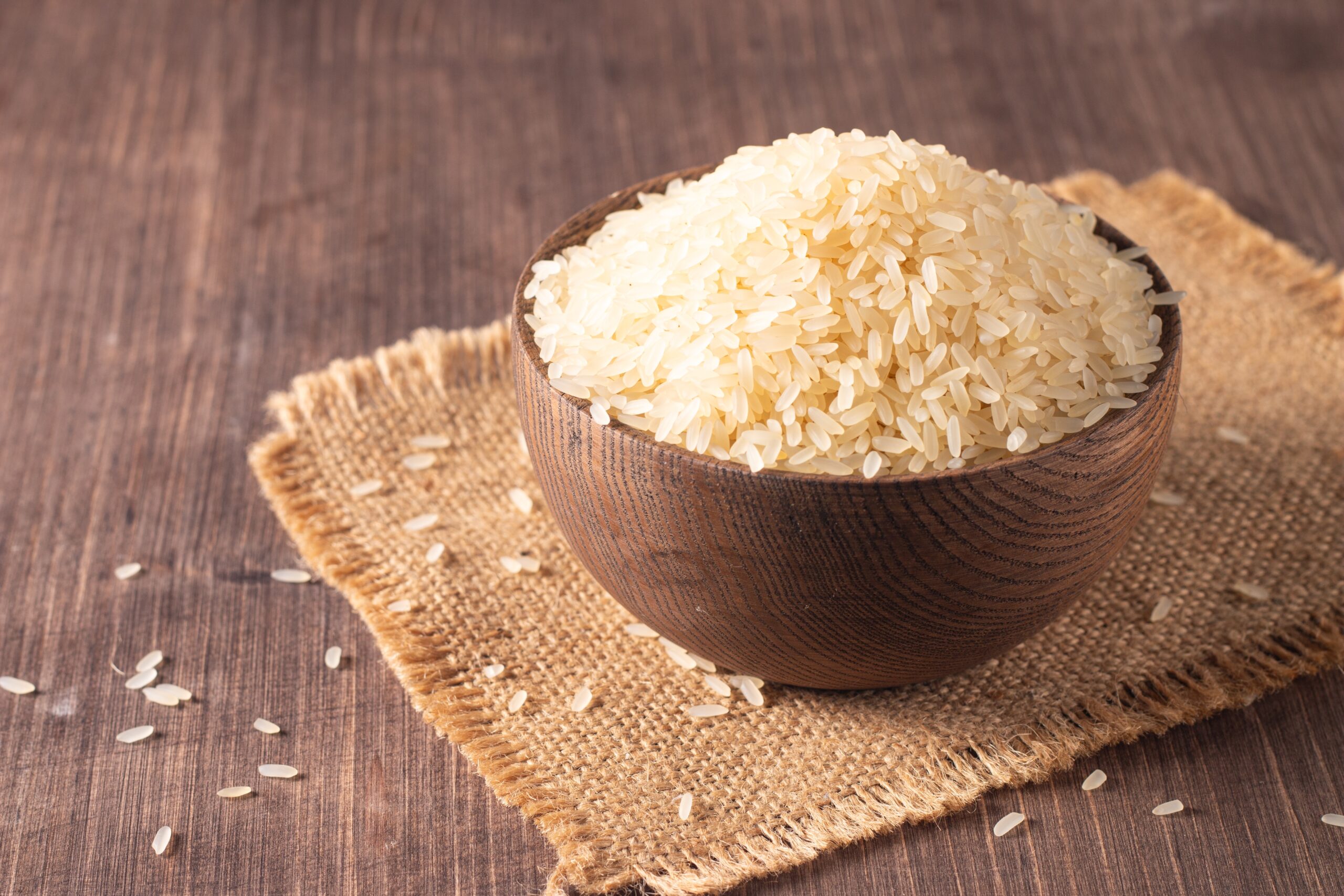
Rice is a universal staple that pairs well with almost any meal, making it an essential item for cost-conscious grocery shoppers. With hundreds of varieties to choose from, rice offers versatility in flavor and texture, from fluffy basmati to sticky sushi rice. Buying rice in bulk is an excellent way to reduce costs and ensure you always have a filling component for your meals. It’s a simple yet effective way to stretch more expensive ingredients like meat and vegetables. Because rice is shelf-stable, you won’t have to worry about it going bad, which further maximizes your investment.
Moreover, rice is incredibly adaptable, offering options for every meal and cuisine. It can serve as a base for stir-fries, a side dish for proteins, or even a main course when combined with beans or lentils. Transform leftover rice into fried rice, rice pudding, or rice salads, reducing waste and getting the most bang for your buck. The possibilities are nearly endless, making rice a small investment that offers substantial returns in terms of meal variety and budget savings.
5. Whole Wheat Pasta
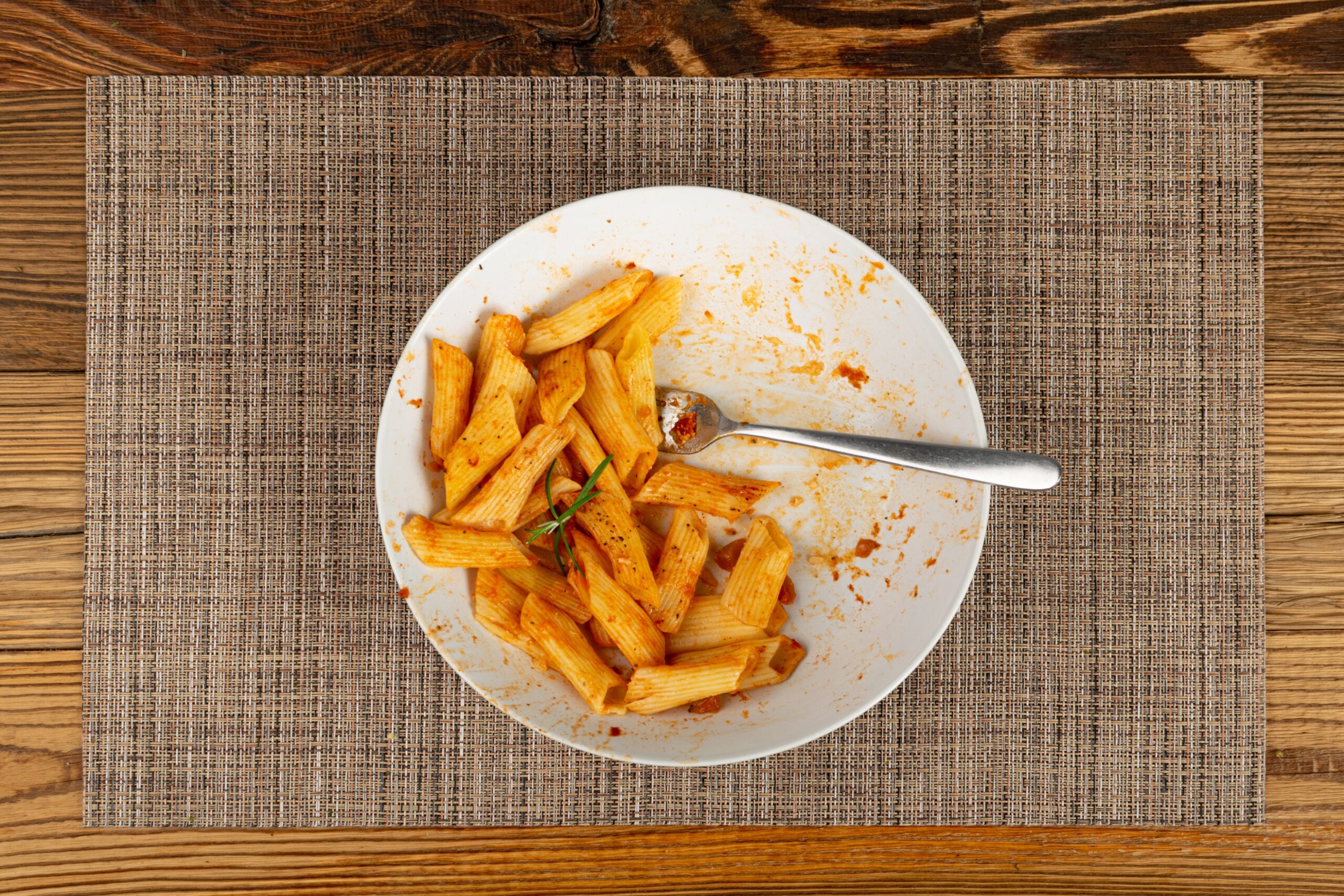
Whole wheat pasta is a heartier, healthier alternative to traditional pasta, offering more fiber and nutrients. It provides a satisfying base for countless dishes, from classic spaghetti to inventive pasta salads. The cost difference between regular pasta and whole wheat is minimal, yet the health benefits are significant. Dr. Michael Green, a dietitian at Wellness Central, notes that the added fiber in whole wheat pasta aids digestion and prolongs feelings of fullness, which can help reduce snacking. This makes whole wheat pasta a smart choice for both your wallet and your waistline.
Moreover, whole wheat pasta can be easily enhanced with budget-friendly additions. Pair it with simple sauces made from canned tomatoes, olive oil, herbs, or cheese for cost-effective meals. Toss in seasonal vegetables or legumes for added nutrition without a hefty price tag. Stocking up on whole wheat pasta ensures you always have a quick, nutritious meal option ready to go. It’s a small change that can lead to big savings and better health outcomes.
6. Eggs

Eggs are a nutritional powerhouse available at a fraction of the cost of other protein sources. They are incredibly versatile, providing the foundation for countless recipes, from breakfast scrambles to baking essentials. Packed with protein, eggs help keep you full and satisfied, reducing the need for additional costly snacks or meals. Their affordability and versatility make them a staple that can stretch your budget while ensuring you still eat well. Whether boiled, scrambled, or baked, eggs provide a nutrient-rich option that’s as economical as it is delicious.
In addition to their culinary flexibility, eggs have a long shelf life when stored properly in the refrigerator. This means you can buy them in bulk without worrying about spoilage. Plus, eggs are a great way to repurpose leftovers, transforming yesterday’s veggies into today’s frittata. They can also be the star of budget-friendly meals such as omelets, quiches, or egg salads. With eggs, you can prepare cost-effective dishes without sacrificing flavor or nutrition.
7. Carrots

Carrots are a cost-effective vegetable that offers a sweet crunch and a wealth of nutrients. They’re rich in beta-carotene, fiber, and antioxidants, making them a healthy addition to any meal. Carrots are incredibly versatile, serving as a tasty raw snack or a delicious ingredient in meals like soups, stews, and salads. Dr. Anna Turner, a nutrition expert at the National Institute of Health, highlights the affordability and nutritional benefits of carrots in maintaining a balanced diet. Their long shelf life means they stay fresh longer, reducing waste and further stretching your food dollar.
Beyond their nutritional value, carrots can be an economical way to add bulk to meals. Use them to extend more expensive ingredients like meats or grains in dishes such as casseroles or stir-fries. Shred them into baked goods for added moisture and nutrients without added cost. The humble carrot is a powerful tool in your budgeting arsenal, offering flavor and nutrition without the fancy price tag. With carrots in your kitchen, you can enhance meals without emptying your wallet.
8. Greek Yogurt

Greek yogurt is a versatile, protein-rich ingredient that offers a creamy texture and tangy flavor to numerous dishes. It’s a fantastic alternative to more expensive protein sources, like meats or fish, without compromising on nutrition. Greek yogurt can be used in a variety of ways, from a quick breakfast with fruit and honey to a base for dips and smoothies. This makes it an economical choice for those seeking to add variety and nutrition to their diet without exceeding their budget. It’s also a great substitute for sour cream or mayonnaise, offering similar creaminess with added health benefits.
Stocking up on Greek yogurt not only enhances your meals but also boosts their nutritional profile. It’s an excellent source of calcium and probiotics, which support bone health and digestion. Purchase plain Greek yogurt in bigger containers to save money and customize flavors with your own additions like fruits or herbs. Its versatility extends to savory applications as well, where it can be incorporated in marinades, sauces, and even baked goods. Greek yogurt is a small investment with a big impact on both your health and your budget.
9. Frozen Vegetables

Frozen vegetables are a convenient, cost-effective alternative to fresh produce, particularly when certain vegetables are out of season. They are often flash-frozen at peak ripeness, locking in nutrients and flavor. This makes them a versatile option for quick, easy meals that don’t compromise on health or taste. Compared to fresh vegetables, frozen options are less likely to spoil quickly, reducing waste and saving you money over time. From stir-fries to casseroles, having a variety of frozen vegetables on hand ensures you always have a nutritious side or meal base ready to go.
Moreover, frozen vegetables can simplify meal prep and cooking, leading to less time spent in the kitchen. They’re pre-washed and pre-cut, saving you valuable prep time. Frozen veggies are also a great way to add color and nutrients to dishes without the higher cost of fresh produce. Incorporate them into soups, pasta, or omelets for a boost of nutrition and flavor. With frozen vegetables, you can enjoy the convenience and cost savings without sacrificing the health benefits of fresh produce.
10. Potatoes

Potatoes are a budget-friendly staple that can be transformed into a myriad of dishes. As a versatile carbohydrate, they can be baked, mashed, roasted, or fried, providing endless culinary possibilities. Potatoes are not only affordable but also packed with nutrients like vitamin C, potassium, and fiber. Their long shelf life makes them a practical investment, minimizing waste and maximizing value. By incorporating potatoes into your meals, you can create satisfying, budget-conscious dishes that keep your grocery bills in check.
Beyond their affordability, potatoes can help stretch more expensive ingredients further. Add them to soups and stews to enhance heartiness without adding much to the cost. Use them as a base for toppings like meats or cheese, creating filling meals with simple ingredients. Potatoes can also serve as a substitute for other pricier starches, offering similar flavors and textures at a reduced cost. Embrace the humble potato for its economical benefits and its ability to elevate everyday meals.
11. Canned Fish
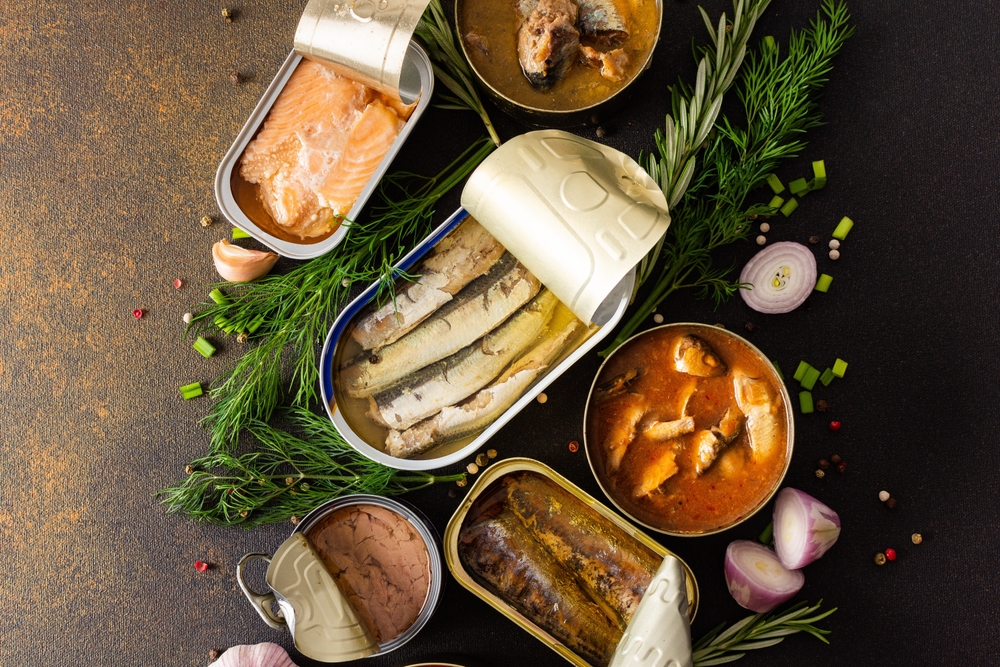
Canned fish, such as tuna or sardines, offers a convenient and cost-effective source of protein and omega-3 fatty acids. It’s a versatile pantry staple, capable of elevating simple dishes such as salads, sandwiches, or pastas. The cost savings of canned fish compared to fresh are significant, making it an attractive option for those looking to incorporate more seafood into their diet without the high price tag. Plus, the extended shelf life of canned fish means you can stock up without the worry of it going bad. Canned fish offers both flavor and nutrition, all while keeping your budget in mind.
Incorporating canned fish into your meals is a savvy way to boost nutritional value without additional expense. It can be used to create quick, delicious meals, such as tuna salad, fish cakes, or pasta dishes. The convenience of canned fish also makes it a reliable option for last-minute meal planning. With its protein-packed goodness, canned fish proves that you don’t need to spend big to eat well. Enjoy the savings and versatility that come with this pantry staple.
12. Onions

Onions are a kitchen essential that provide a depth of flavor to countless recipes without adding significant cost. As a culinary workhorse, they’re used in a wide range of dishes, from soups and stews to stir-fries and casseroles. Onions are affordable and have a long shelf life, making them a reliable addition to any grocery list. Their ability to enhance the flavor of other ingredients allows you to create more with less, stretching your budget further. Whether they’re caramelized, sautéed, or raw, onions add richness and complexity to meals, proving that delicious doesn’t have to be expensive.
In addition to their flavor benefits, onions offer nutritional advantages as well. They contain antioxidants and compounds that promote heart health and reduce inflammation. Onions are a low-cost way to boost the health profile of your meals without compromising on taste. Their versatility also means they can be used in large quantities or as subtle enhancers, depending on your culinary needs. With onions as a staple in your kitchen, you’re never far from a delicious, budget-friendly meal.
13. Flour
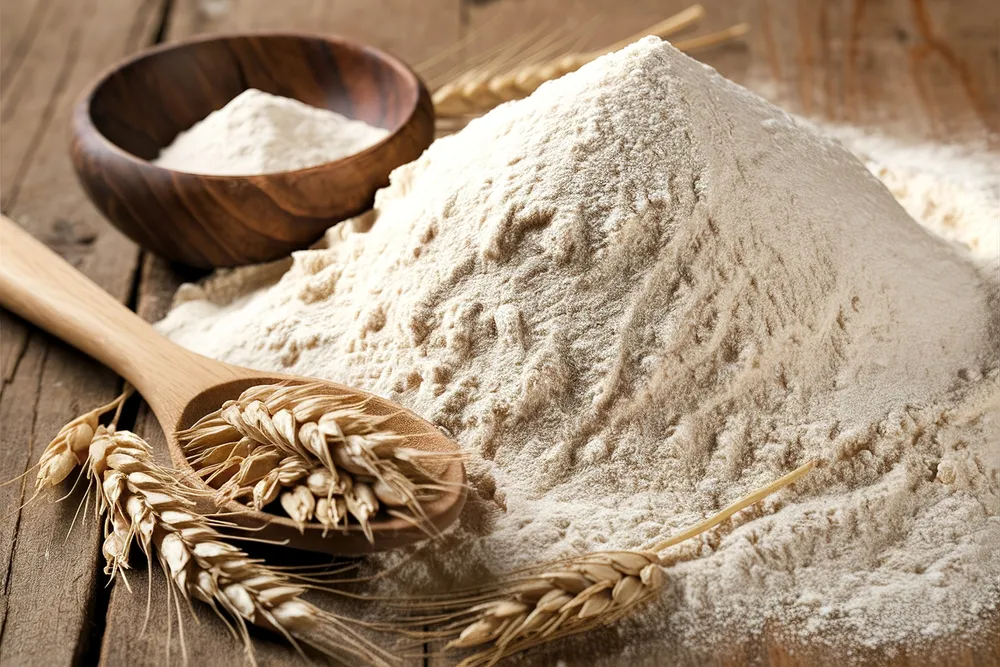
Flour is a versatile ingredient that forms the backbone of countless recipes, from baking bread to thickening sauces. Buying flour in bulk can lead to substantial savings, especially if you often bake or cook from scratch. It’s a cost-effective way to create a wide range of homemade goods, often at a fraction of the store-bought price. Flour’s long shelf life and multiple uses make it a valuable addition to any pantry. With flour on hand, you can whip up everything from pancakes to pizza dough without the need for expensive pre-packaged alternatives.
Beyond baking, flour can be used creatively to enhance meals and stretch your grocery budget. Use it as a coating for frying, as a binder in meat dishes, or to make homemade pasta. It can also serve as a thickening agent for soups and gravies, offering a simple way to add heartiness and depth to dishes. Investing in flour opens up a world of culinary possibilities, allowing you to create delicious, homemade meals without the high cost. Embrace the potential of flour to deliver both savings and satisfaction.
This article is for informational purposes only and should not be construed as financial advice. Consult a financial professional before making investment or other financial decisions. The author and publisher make no warranties of any kind.








